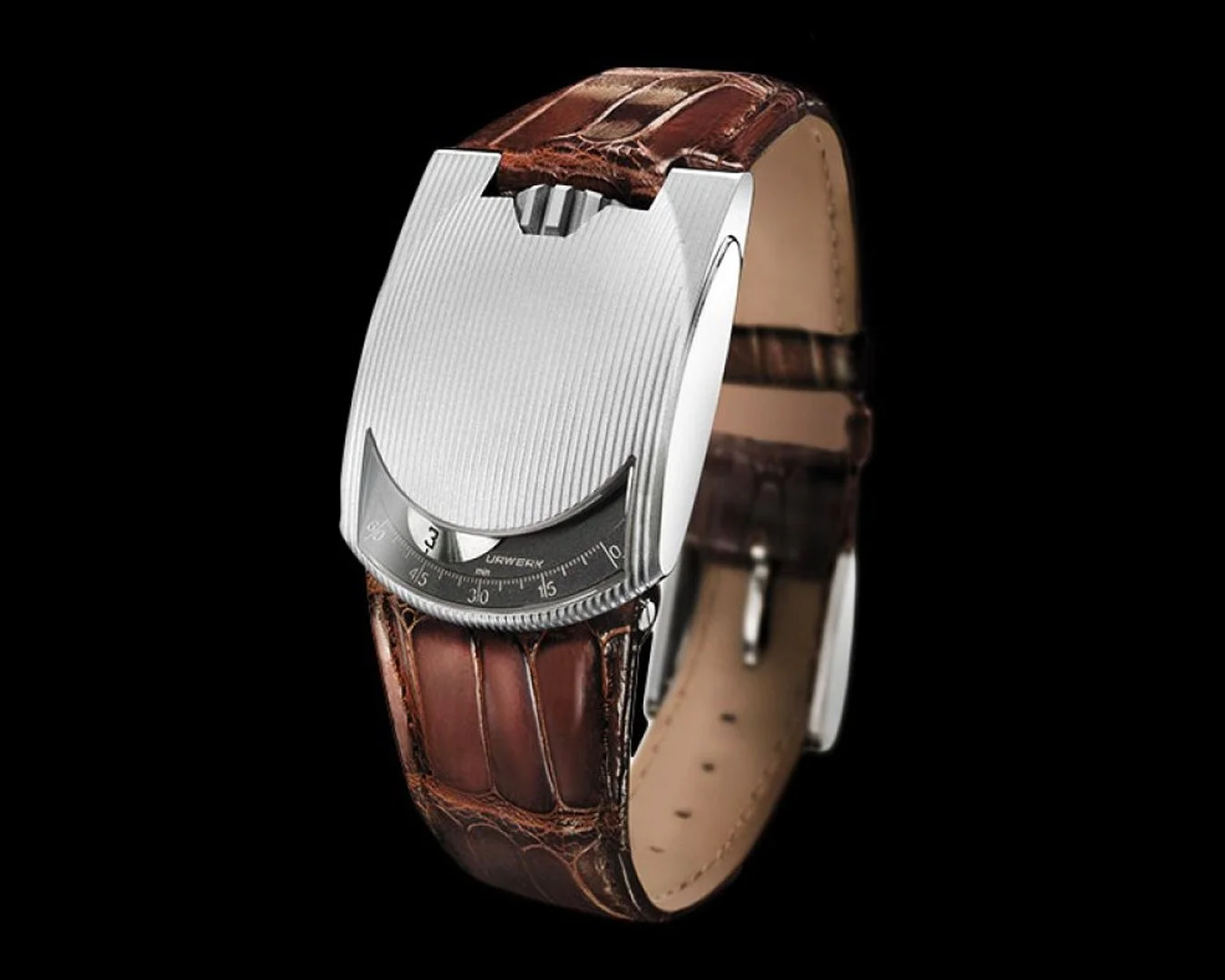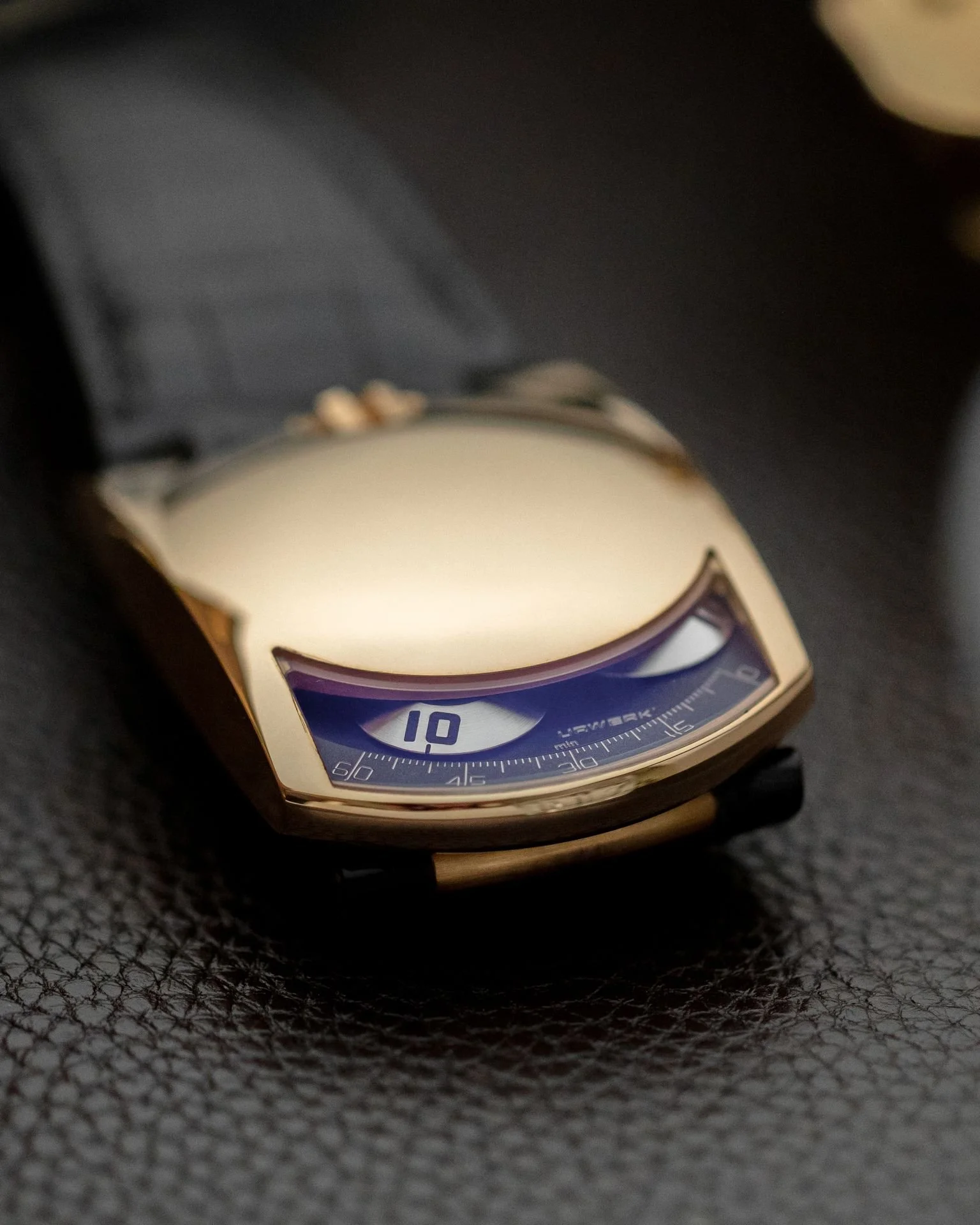The Icons – Urwerk's UR-103
What makes an iconic watch? It may be a novel technical complication, some form of design innovation, or exquisite finishing that all contribute to a timepiece’s excellence. Even when combined though, there are plenty of timepieces that simply don’t make it to the level of icon with all of the “necessary” ingredients. Sometimes, external factors matter as much as the object. That’s why every iconic watch is always more than its sum of parts.
With this series on icons in modern independent watchmaking, we’re going to shed light on some of the aspects that define these timepieces, above and beyond the metal.
And what better place to start than Urwerk’s UR-103, the brand’s first serially produced timepiece that laid the foundation for an extensive catalog of marvels in modern horology.
The Icon – Unpacking the UR-103
Launched in 2003, the UR-103 was the brainchild of Martin Frei and Felix Baumgartner, the artist and master watchmaker duo behind Urwerk. Testament to a “no limits” approach to haute horlogerie, the four orbiting and rotating satellites indicate the time in both analog and digital fashion as it arcs across the minute chapter. Inspired by a night clock created for Pope Innocent XI by the Campanus Brothers in 1682, years of research, development, and testing went into miniaturizing the mechanics for a wristwatch. The original UR-103.01 was released in a white and rose gold, limited to 25 in each material, and featured textured grooves in the case. The end result was a remarkable tonneau-shaped, spaceship-esque case with an exceptionally large crown at 12 o’clock.
It’s important to say that it is easy to over-emphasize the space-age aesthetics and understate the watchmaking prowess of Urwerk timepieces. Part of the brand’s magic is that they push the limits of technical watchmaking as much as they break the mold of traditional watchmaking aesthetics. There’s no sacrifice of chronometric performance at the cost of aesthetics.
That watchmaking expertise and innovation is best represented in the challenge of ensuring isochronal performance for the satellites while minimizing friction and energy loss in the UR-103. It was no small feat designing a movement that has the power to drive the satellite indications of time, roughly 150 times heavier than traditional hands.
Retired more than a decade ago in 2010, the UR-103 has only gained wider popularity amongst collectors. As the bedrock on which Urwerk was built, the UR-103 represents more than innovative watchmaking and aesthetics.
What makes the UR-103 iconic
The thing about icons is that they frequently come to define a moment in time and influence the future thereafter. The Ferrari Testarossa is an icon for its thoroughly 1980’s vibes (thank you, Miami Vice!), pushing performance automotive to strike a balance between everyday usability and pure speed. The Mona Lisa is an icon as an early participant in the aesthetic turn to more realistic depictions of human anatomy in all its subtlety.
With the UR-103, its arrival in the early 2000s solidified the birth of a new art movement in the watch industry. Alongside the creations of De Bethune, Vianney Halter, and MB&F a few years afterwards, there was an informal collective of watchmakers that paved the way for a new definition of haute horlogerie. With sci-fi overtones, this newfound aesthetic created high luxury timepieces that felt like something that may be on the wrist of a character in a graphic novel in the year 2200. In the short period of the late 1990s and early 2000s, the days were gone when fine watchmaking was confined to its classical definition – haute complications, round cases, and classic hands.
Some certainly viewed this evolution in the aesthetics of fine watchmaking as a heinous break from tradition, as is a common reaction with almost all aesthetic shifts in art from Caravaggio to Abstract Expressionism to Pop Art. Fast forward 20 years though, the UR-103 is one of the central pillars in the temple of modern independent watchmaking. It’s transitioned through the whole lifecycle of an icon – it was misunderstood, then loved, and last copied. Today, there is a growing, new generation of homage watchmaking brands that create timepieces in line with the aesthetic brought to life by the UR-103.





